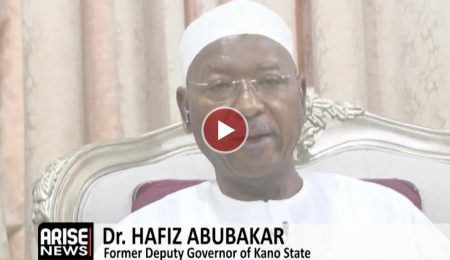Public affairs analyst Bright Omaghomi has accused the Independent National Electoral Commission (INEC) of carrying out a fraudulent ward delineation in Warri Federal Constituency, insisting that while the Supreme Court ordered delineation, the report produced by INEC is riddled with irregularities.
He made the remarks during an interview with ARISE News on Friday, where he also confirmed that legal action is underway to challenge the commission’s report.
Omaghomi clarified that the ongoing agitation is not against the Supreme Court judgment that ordered INEC to carry out the delineation, but rather against the outcome of the delineation exercise itself.
“INEC submitted a report to the state court this year, 2025, of the proposed ward delineation it has carried out, which means that INEC has obeyed the Supreme Court judgement, and INEC has delineated,” he said.
“Now, we are not challenging the position of the Supreme Court judgement asking INEC to delineate. What we are challenging is the reports that INEC has produced from this delineation.”
He alleged that INEC’s report is fraudulent, citing findings from independent surveyors who examined the coordinates provided by INEC.
“This report is fraudulent, and that was why we were at Abuja protesting,” he explained. “We employed the services of registered surveyors to look at the coordinates as provided by INEC in this ward delineation exercise. That was how we discovered the level of fraud in this particular report.”
“In fact, if you have the time to go through these coordinates, you’ll find that the nature of this fraud is monumental. We’re not talking about one or two errors here and there. Over 80% of this job done by INEC has been fraudulent.”
Omaghomi accused INEC of overstepping its mandate by renaming existing communities, creating fictitious ones, and adjusting federal constituency boundaries beyond the scope of the Supreme Court’s directive.
“INEC has gone out of bounds. INEC is not doing the job of boundary adjustment,” he stated. “INEC even went ahead to create communities where there are none. For example, we all know in Warri, there’s Miller Waterside. Today, INEC called it Bulwama.”
He insisted that even if new wards or units are created, the original names of existing communities should remain intact.
Addressing concerns about multiple dismissed cases, including one where penalties were awarded against the plaintiffs for filing frivolous suits, Omaghomi maintained that the present issue is different and centres on INEC’s implementation rather than the Supreme Court’s ruling.
“We are going to ask INEC to come and explain how they went about this delineation, where they started renaming communities and adjusting boundaries that include or exclude local governments or even bring in Edo and Ondo states where they don’t belong,” he said.
Omaghomi alleged that the delineation exercise was driven by vested interests, naming Professor Rhoda Gumus, an INEC official from Bayelsa State, as an interested party.
“Professor Rhoda Gumus is the one who aired the team that carried out this delineation in Warri Federal Constituency,” he said. “She is an IJAW woman and a member of the IJAW Leaders of Thought. It is this woman who was the instrument utilised by the IJAWs of Baramatu and some Urhobos in Warri to carry out this fraud.”
Pressed to provide proof, he pointed to the report from the independent surveyors, which he claimed showed that many of the new coordinates provided by INEC fall on uninhabitable areas such as rivers and forests.
“Many of these coordinates were falling on rivers or deep forests where there is no habitation,” he said. “Hopefully fishes or animals from the forest will come and vote during elections in those polling units.”
He also raised concerns over alleged population manipulation, noting that there has been no census since 2006 to justify the figures used by INEC in the delineation.
“The last census was conducted in 2006. Till date, we have not done any other census. You cannot have the population disparity that we currently have where overnight, Urhobos are assumed to be more than the Itsekiris in their own federal constituency,” he said.
“INEC cannot conduct any of this job in isolation from institutions like the National Boundary Commission, the National Population Commission, and the voter register.”
He gave specific examples, such as the exclusion of Ubeji from the delineation, while smaller settlements were elevated.
“In many of the Itsekiri wards, there has been no growth in population but they remain one. For example, Ubeji was not reflected at all in this delineation. Meanwhile, you went about creating Bukiti, Otegele, and moved them into Warri main town,” he added.
On the question of whether the group is filing a new court case or merely making noise in the media, Omaghomi confirmed that fresh legal action is imminent.
“We will be going to court. We want INEC to come and explain to us what happened with this delineation and the report we are getting,” he said. “Many of our communities—over 300 of them—have been renamed. Once you plot the correct coordinates, the actual names come out, which is different from what INEC gave us.”
When asked whether the surveyors who conducted the independent verification were Itsekiri, Ijaw, or Urhobo, Omaghomi declined to disclose their identities for now but assured that their names would be made public in court.
“That is for my personal consumption for now,” he said. “Once the report is in the public domain and we are in court, you will see the name of the surveyor.”
The controversy reflects long-standing tensions in Warri, where multiple ethnic groups—Itsekiri, Urhobo, and Ijaw—have historically laid claim to various territories.
Omaghomi, however, insisted that court judgments support the position of the Itsekiri.
“Anyone can lay claim to anywhere in Nigeria, but in the case of Warri, the only people who have won court judgments of ownership are the Ukere Urhobo under Ijimusubu,” he said. “Even then, that is just possessory right, not title.”
“You can’t use one court victory over 281 acres to claim ownership of the entire Warri, which covers over 1,520 square miles. It doesn’t make sense.”
He concluded by stressing that their protest and legal challenge are focused solely on ensuring INEC’s delineation process is transparent, fair, and in line with existing legal and demographic realities.
Boluwatife Enome
Follow us on:


